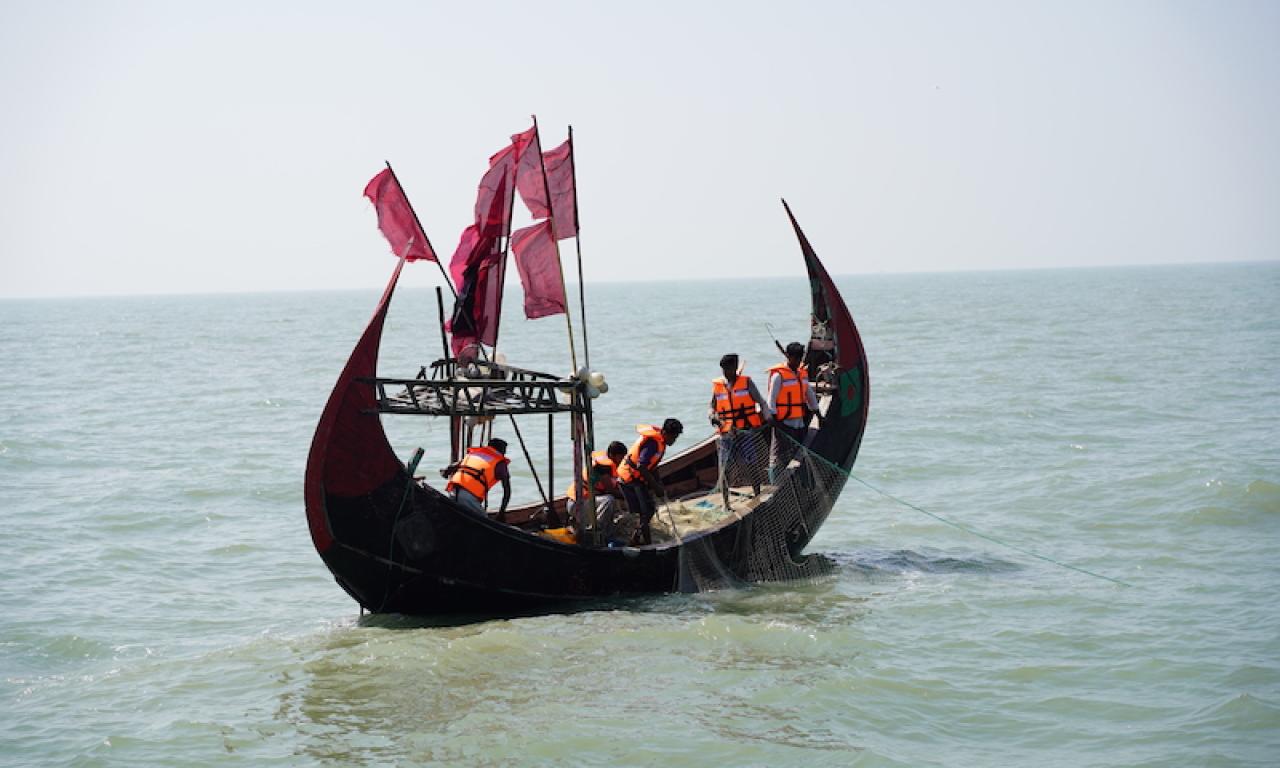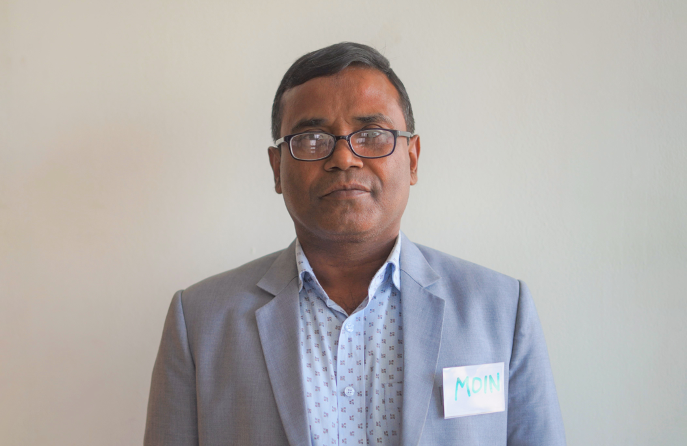
- The ecosystem approach to fisheries management (EAFM) is an innovative and integrated pathway to managing fisheries sustainably while safeguarding the marine ecosystem.
- WorldFish held a five-day training of trainers on EAFM in Bangladesh to build the capacity of relevant stakeholders to incorporate an EAFM-based plan for the future management of the Bay of Bengal’s marine artisanal fisheries resource.
- Effective implementation of EAFM requires regular monitoring, evaluation, and adaptability to achieve sustainable fisheries management and ecosystem protection.
The world faces an increasingly arduous task to meet the rising demand for fish and other aquatic foods. The importance of sustainable fisheries management to ensure there is sufficient fish now and for years to come cannot be overstated, with over 3 billion people dependent on aquatic foods as their primary source of animal protein.
Not only is it vital for the health and well-being of communities around the world but it is also a key component in achieving UN Sustainable Development Goal (SDG) 14: Life Below Water, which espouses the protection and restoration of marine and coastal ecosystems.
Employing an ecosystem approach to fisheries management (EAFM) is an innovative and integrated pathway to managing fisheries sustainably while safeguarding the marine ecosystem. EAFM takes into account the entire ecosystem and seeks to balance the social, economic and environmental aspects of fisheries management.
Ensuring an inclusive and holistic assessment
To implement EAFM, an assessment of the fisheries and the environment on which it depends is required, followed by the establishment of specific objectives and targets. Stakeholders, including fishers, fishing communities and scientists, should be involved and participate in the formulation of management measures such as fishing practice regulations, habitat protection and the reduction of bycatch and discards, alongside the government to ensure the process is inclusive and geared toward success.
Regular monitoring and evaluation of these measures are required, with the process kept adaptive and flexible to accommodate new information or changing circumstances. This may entail revising objectives, modifying measures or adjusting to new stakeholder requirements. Adopting co-management can be instrumental in implementing EAFM effectively.
In February 2023, WorldFish held a five-day training of trainers on EAFM in Bangladesh to build the capacity of relevant stakeholders to incorporate an EAFM-based plan for the future management of the Bay of Bengal’s marine artisanal fisheries resource.
The training was held at the BRAC Learning Center in Chattogram, Bangladesh, as part of the Enhanced Coastal Fisheries in Bangladesh Phase II (ECOFISH II) project funded by the United States Agency for International Development (USAID).
Fulfilling multiple stakeholders’ needs

A total of 24 participants, including government officials, academics and researchers involved in the management and research of marine fisheries in the Bay of Bengal, took part in the training.
The training was facilitated by Romeo Cabungcal, a leading EAFM consultant from the Philippines, who was assisted by Israt Zahura, an ECOFISH II training specialist.
"I believe that putting EAFM into practice can improve governance, ecological health and human well-being in coastal areas. It may also assist us in achieving SDG 14. So, it is imperative to promulgate and implement this plan for a sustainable future," said Saifur Rahman, a Bangladesh Coast Guard lieutenant commander who participated in the training.
Professionals received hands-on training in ecosystem-based fisheries management through the training, providing them with the information they need to make informed decisions on the Bay of Bengal's fisheries. The training provided insights to participants on how to use ocean resources responsibly while still maintaining the ecosystem's balance by learning the major threats to the ocean and exploring potential solutions.
“I am convinced that incorporating EAFM into my work and decision-making processes is vital. For example, if we want to safeguard the coral reefs on St. Martin Island from human-caused damage, I can confidently turn to EAFM," said Moin Uddin, principal scientific officer at Bangladesh’s Department of Fisheries.
Sumi Akter, assistant professor at Chattogram Veterinary and Animal Sciences University (CVASU), gained new confidence in teaching EAFM to her students after the training provided her with the tools she needed to conduct real-time exercises with stakeholder engagement in remote coastal areas, recognizing the need for active participation and practical engagement to effectively implement EAFM in real-world situations.
“I learned how to facilitate programs involving stakeholders at various levels and how to effectively engage them to achieve the best possible outcomes," said Akter.
Providing a framework for sustainable and equitable resource management
As part of the training, participants discussed how EAFM can improve artisanal small-scale fisheries in Bangladesh. As a result, the EAFM exercises provided a framework for sustainable and equitable resource management – promoting sustainable fishing practices while contributing to biodiversity conservation in the Bay of Bengal.
Participants considered EAFM to be a valuable and adaptable strategy for addressing the challenges faced by small-scale fisheries, including declining fish stocks, habitat degradation and the impacts of climate change.
Due to increased fishing pressure, the coastal waters of Bangladesh’s Bay of Bengal are experiencing considerable problems, resulting in the exploitation of target species and declining biodiversity.
Conventional stock-based management has been demonstrated to be ineffective since it neglects the wider ecosystem. A more sustainable and equitable approach to fisheries management is provided by EAFM, which has the potential to promote sustainable fishing practices, support small-scale fishers and communities as well as conserve biodiversity.
By bringing together stakeholders involved in various ecosystem services, it helps balance conservation benefits and livelihood outcomes. EAFM implementation is crucial for sustainable marine fisheries management in Bangladesh as well as the protection of the ecosystem for future generations.
